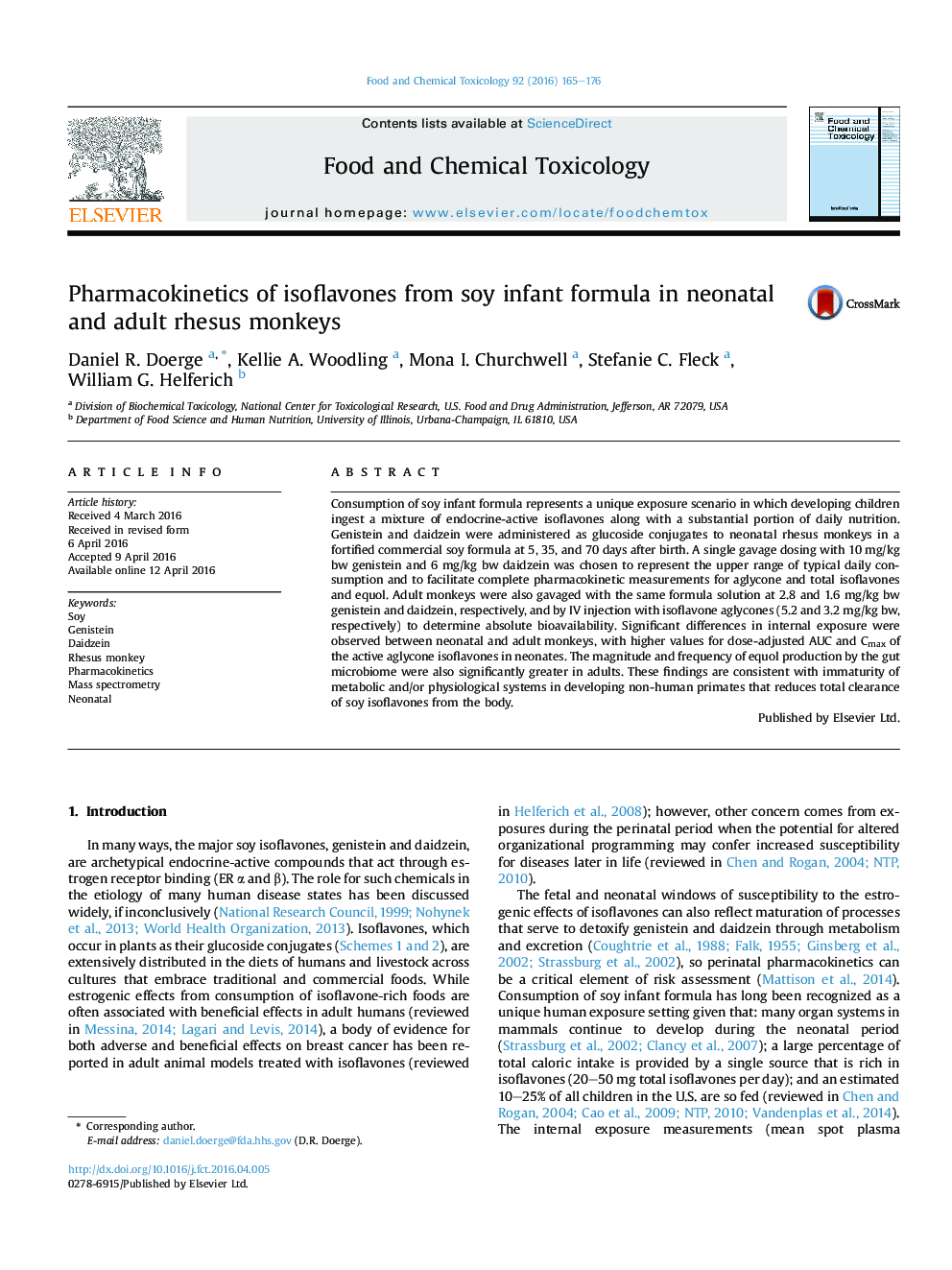| Article ID | Journal | Published Year | Pages | File Type |
|---|---|---|---|---|
| 5849341 | Food and Chemical Toxicology | 2016 | 12 Pages |
Abstract
Consumption of soy infant formula represents a unique exposure scenario in which developing children ingest a mixture of endocrine-active isoflavones along with a substantial portion of daily nutrition. Genistein and daidzein were administered as glucoside conjugates to neonatal rhesus monkeys in a fortified commercial soy formula at 5, 35, and 70 days after birth. A single gavage dosing with 10Â mg/kg bw genistein and 6Â mg/kg bw daidzein was chosen to represent the upper range of typical daily consumption and to facilitate complete pharmacokinetic measurements for aglycone and total isoflavones and equol. Adult monkeys were also gavaged with the same formula solution at 2.8 and 1.6Â mg/kg bw genistein and daidzein, respectively, and by IV injection with isoflavone aglycones (5.2 and 3.2Â mg/kg bw, respectively) to determine absolute bioavailability. Significant differences in internal exposure were observed between neonatal and adult monkeys, with higher values for dose-adjusted AUC and Cmax of the active aglycone isoflavones in neonates. The magnitude and frequency of equol production by the gut microbiome were also significantly greater in adults. These findings are consistent with immaturity of metabolic and/or physiological systems in developing non-human primates that reduces total clearance of soy isoflavones from the body.
Related Topics
Life Sciences
Agricultural and Biological Sciences
Food Science
Authors
Daniel R. Doerge, Kellie A. Woodling, Mona I. Churchwell, Stefanie C. Fleck, William G. Helferich,
